Common Pests:
The most common pests of foliage and flowering plants are spider mites, mealy bugs, fungus gnats, whitefly and aphids. The use of plant material for outdoor as well as indoor decoration exposes them to all manner of garden pests, such as caterpillars, slugs, snails and thrips, many of which thrive once the plants are moved back indoors. For this reason, plants which are being moved from decks, patios, etc. to the home or office should be washed thoroughly with a spray of clear water.
Pest Control:
Despite the best control programs employed by growers and retailers, it sometimes happens that a new plant harbors pests whose eggs have survived to hatch in you home conditions. A period of isolation (10-14 days) may be the answer. Yet some pests may not show up for a longer time, being present in small numbers until the indoor climate becomes more favorable; for example, spider mites thrive in dry air, so they may not become evident until the humid season is past.
Regular and frequent checking for abnormal growth and insects can be combined with your checks for watering needs. Most pests lurk under leaves and close to the growing tip where tissue is softest. Most of these pests can be washed off with a spray of water. Several washes over a period of two or three weeks, plus isolation for the infested plant to prevent the pest from moving to other plants, generally eliminates the problem. Chemical sprays are not pleasant to use, and are generally recommended for outdoor application.. Some pesticides are hazardous, not only to the general environment, but to the plant tissue. Ferns are extremely sensitive to all forms of chemical spray, and infested fronds are best removed and destroyed.
Diseases:
Diseases are rare on foliage and flowering plants. The only ones likely to be encountered are Botrytis, the gray mold fungus that invades dead and dying tissues, and soft leaf spot or crown rot fungi which thrive in moist atmospheres. The best cure is to remove affected parts, and avoid splashing the plant when watering; give more space for air circulation, or move infected plants to a drier place.
Pests of Foliage & Flowering Plants
| Pest | Typical damage | Control |
|---|---|---|
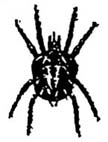 Spider Mite Spider Mite |
Tiny white or yellow spots on leaves, later becoming mottled and dusty. Fine webs under leaves and in growing tips. Leaves may curl up. Thrive in dry climates. | Wash and spray plant with clean, warm water, several times in 2-3 weeks. Spray with an approved pesticide. |
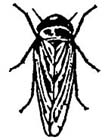 Fungus Gnat Fungus Gnat |
Fungus gnats are small flies that are a nuisance but do not feed as adults. The small larvae feed on decaying organic matter in the growing medium. | Do not keep the growing medium excessively wet. Apply an approved pesticide. |
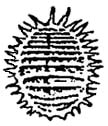 Mealy Bug Mealy Bug |
Cottony white secretions along stems and under leaves. Flat insects move, though slowly. | Wash off insects and secretions with clean, warn water. Kill by wiping off with rubbing alcohol (check plant’s tolerance of alcohol first). Spray with an approved pesticide. |
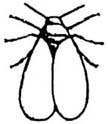 Whitefly Whitefly |
Tiny white moths fly up when plant is disturbed; larvae suck plant juices, causing general weakening. Thrive in dry climates, generally on flowering plants and annuals. | Wash off the tiny wingless larvae. Adult whitefly controlled with spray of an approved pesticide. |
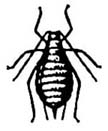 Aphid Aphid |
Greenish insects visibly sucking plant juices, cause small, distorted, weak growth. | Wash whole plant several times. Spray with an approved pesticide. |
